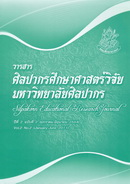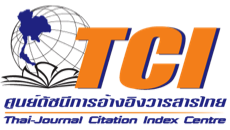การพัฒนาโปรแกรมความร่วมมือระหว่างครอบครัวและโรงเรียนเพื่อป้องกันพฤติกรรมเสี่ยงของนักเรียนวัยรุ่น : กรณีศึกษาโรงเรียนเทศบาล 2 วัดเสนหา (สมัครพลผดุง)
บทคัดย่อ
บทคัดย่อ
การวิจัยครั้งนี้มีวัตถุประสงค์เพื่อ 1) ศึกษาปัจจัยที่สนับสนุนความสำเร็จ และปัจจัยที่เป็นอุปสรรคต่อการพัฒนาความร่วมมือระหว่างครอบครัวและโรงเรียนเพื่อป้องกันพฤติกรรมเสี่ยงของนักเรียนวัยรุ่น 2) พัฒนาโปรแกรมความร่วมมือระหว่างครอบครัวและโรงเรียนเพื่อป้องกันพฤติกรรมเสี่ยงของนักเรียนวัยรุ่น และ 3) ศึกษาผลของโปรแกรมความร่วมมือระหว่างครอบครัวและโรงเรียนเพื่อป้องกันพฤติกรรมเสี่ยงของนักเรียนวัยรุ่นที่พัฒนาขึ้นต่อนักเรียน ครู ผู้ปกครอง และผลผลิตอื่นๆ ทำการศึกษากับประชากรในโรงเรียนเทศบาล 2 วัดเสนหา (สมัครพลผดุง) คือ นักเรียนชั้นมัธยมศึกษาปีที่ 2-3 จำนวน 143 คน ผู้ปกครองนักเรียนช่วงชั้นที่ 3 จำนวน 240 คน และครูช่วงชั้นที่ 3 จำนวน 16 คน ผลการวิจัยพบว่า 1) ปัจจัยที่สนับสนุนความสำเร็จต่อการพัฒนาความร่วมมือระหว่างครอบครัวและโรงเรียนเพื่อป้องกันพฤติกรรมเสี่ยงของนักเรียนวัยรุ่น คือ นักเรียนส่วนใหญ่มีพฤติกรรมเสี่ยงอยู่ในระดับน้อย ครูให้ความร่วมมือเมื่อพบนักเรียนมีพฤติกรรมที่เป็นปัญหา ผู้ปกครองให้ความร่วมมือตามที่โรงเรียนแจ้ง ส่วนปัจจัยที่เป็นอุปสรรคคือ นักเรียนมีพฤติกรรมเสี่ยงในด้านการเรียน โรงเรียนขาดระบบการดูแลช่วยเหลือนักเรียน ผู้ปกครองไม่สามารถจัดเวลาเข้าร่วมกิจกรรมกับโรงเรียนได้ ผู้ปกครองขาดทักษะในการใช้วินัยทางบวกและการอบรมนักเรียน และมีแหล่งความเสี่ยงอยู่ในชุมชน 2) โปรแกรมความร่วมมือระหว่างครอบครัวและโรงเรียนเพื่อป้องกันพฤติกรรมเสี่ยงของนักเรียนวัยรุ่นที่พัฒนาขึ้นเป็นการบูรณาการแนวคิดเชิงนิเวศน์ แนวคิดการร่วมมือและแนวคิดการป้องกันเบื้องต้น โดยดำเนินการศึกษาปัจจัยสนับสนุนและปัจจัยที่เป็นอุปสรรคต่อการพัฒนาความร่วมมือระหว่างผู้ปกครองและโรงเรียน ทั้งในระดับบุคคลและสิ่งแวดล้อม และการดำเนินการเพื่อเพิ่มปัจจัยสนับสนุนและลดปัจจัยที่เป็นอุปสรรคต่อการพัฒนาความร่วมมือโดยใช้วิธีการ “ปรับงานเดิม เสริมงานใหม่ ใส่ความร่วมมือ” ด้วยการให้ความรู้ การจัดระบบของโรงเรียน การขจัดข้อจำกัดด้านเวลาและทรัพยากรในตัวผู้ปกครองและครู และการขอรับความสนับสนุนจากเครือข่ายนอกโรงเรียน 3) ผลของโปรแกรมความร่วมมือระหว่างครอบครัวและโรงเรียนเพื่อป้องกันพฤติกรรมเสี่ยงของนักเรียนวัยรุ่นที่พัฒนาขึ้น ได้แก่ นักเรียนมีพฤติกรรมเสี่ยงส่วนใหญ่ลดลง มีเพียงพฤติกรรมเสี่ยงทางเพศที่เพิ่มขึ้น ครูและผู้ปกครองมีความร่วมมือกันดูแลช่วยเหลือและพัฒนานักเรียนเพิ่มขึ้น รวมทั้งมีความรู้สึกที่ดีต่อกัน
Abstract
The purposes of this research were : 1) to study resources and barriers factors related to a family – school collaboration in preventing adolescent students’ risk behaviors; 2) to establish a collaborative family – school program to prevent adolescent students’ risk behaviors; and 3) to study outcomes of the collaborative family – school program. The populations were 143 Mathayomsuksa 2-3 students, parents of students teachers of classes in Tesaban 2 School, Wad Saneiha (Smukpolphadung). The results were : 1) Resources factors of the family–school collaboration program to prevent adolescent students’ risk behaviors were : the majority of the students were at the low level of risk behaviors; teachers cooperated to help problem students; parents cooperated with the program when requested by the school. Barriers factors were : students’ risk behaviors were highly related to learning; the school lacked the systems to assist students at risk; parents did not have time to be involved in the school activities; parents lacked skills to positively discipline their children and there were risk places nearby school. 2) The collaborative family – school program to prevent adolescent students’ risk behaviors was an integration program that included ecological, collaborative and primary preventive concepts. Its purpose was to study resources and barriers that enhanced collaboration between parents and school in developing students in both individual and environmental factors. The suggestions ways to increase the resource factors and decrease barriers were : modifying existing school activities, promoting new activities and enhancing collaboration. The activities were provided by increasing knowledge, reorganizing school system, decreasing time limitation, decreasing weaknesses of parents and teachers, and getting support from the community networks. 3) The outcomes of the family – school collaboration program to prevent adolescent students’ risk behaviors were : most students’ risk behaviors were decreased, except sexual risk behaviors, which were increased; the collaboration of teachers and family in helping and fostering students were increased and they gained positive attitudes towards each others.





